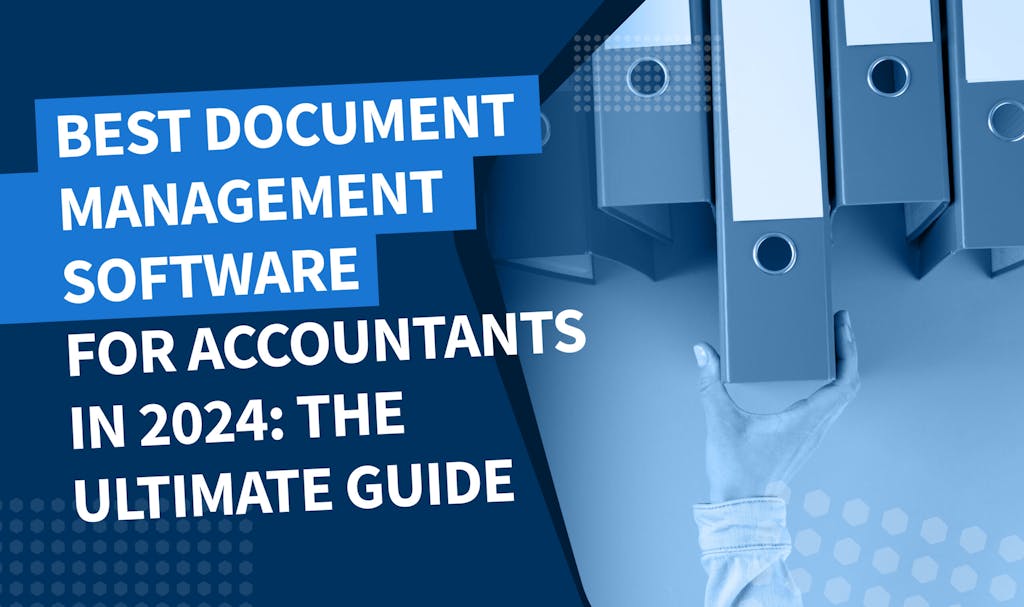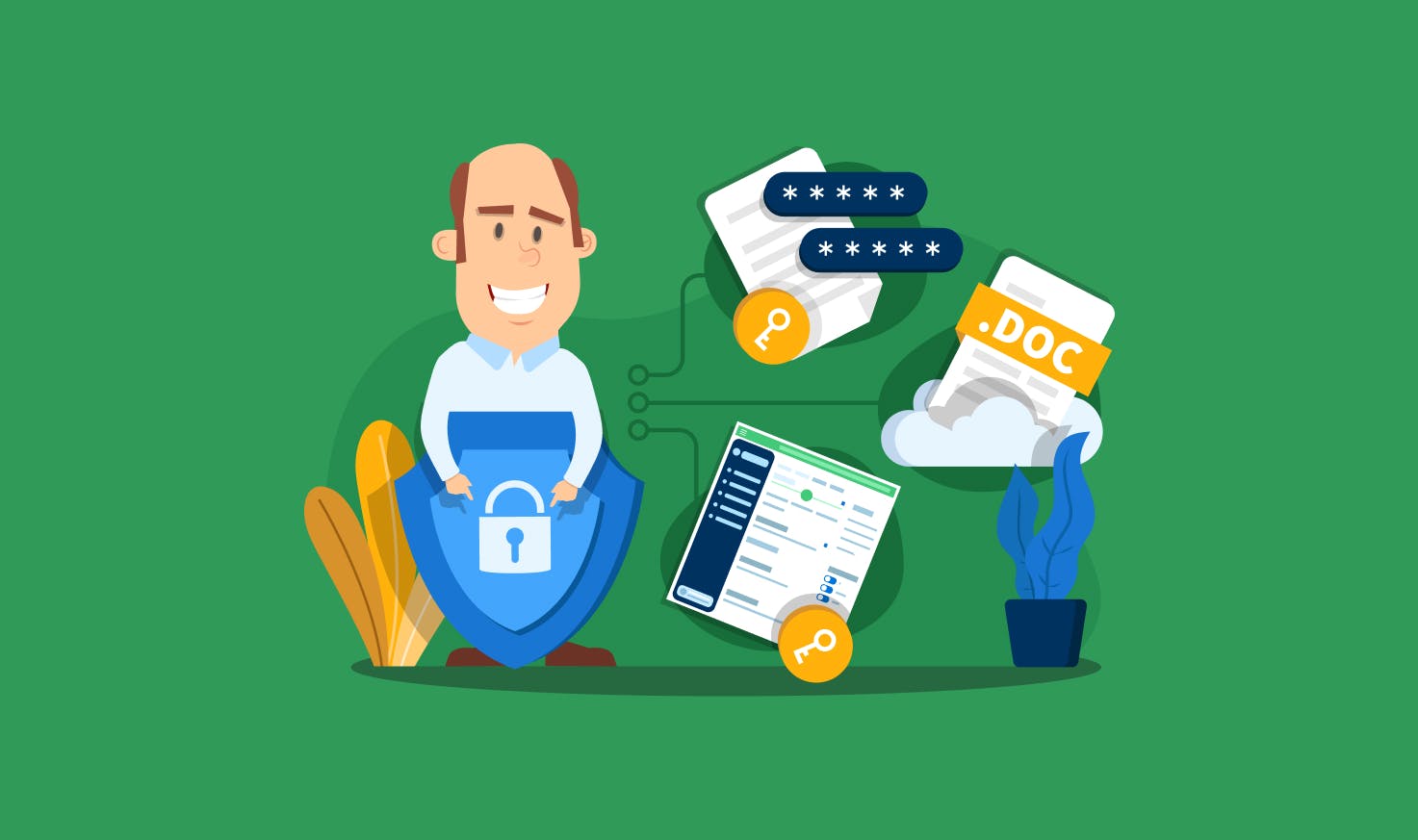
File sharing is an indispensable part of delivering accounting services. However, these files often contain highly sensitive personal and financial information, and safeguarding the exchange of confidential data is crucial.
This article will explore the significance of secure file sharing for accountants — and three actionable methods for implementing it.
The importance of secure file sharing for accountants
Failing to protect your document workflow can open the door to data breaches, with serious consequences. Here are five reasons why safe file sharing should be a top priority for accounting firms:
1. Protect client data
Tax documents contain highly sensitive information, including social security numbers, bank account details and income figures. The company’s responsibility is to prevent unauthorized third parties from accessing this data and to maintain client privacy.
2. Safeguard proprietary firm data
Internal company documents often include proprietary information — pricing strategies, profit margins, expansion plans and more. Protecting your reputation and competitive edge from potential harm requires secure file sharing.
3. Build client trust and loyalty
Clients expect their accountants to handle sensitive financial information with the utmost care and security. Secure file transfers show that the firm prioritizes clients’ interests above convenience or cost, which builds trust.
4. Mitigate cybersecurity risks
Confidential information can also be compromised through cyberattacks. Phishing, hacking and accidental leaks are major risks. Secure sharing methods prevent unauthorized access and data breaches, even if an attack occurs.
5. Avoid regulatory noncompliance
Without safe file sharing, accounting firms may risk fines, lawsuits and reputational damage for non-compliance with strict data protection laws.
The good news is that with the proper precautions, accounting firms can share files seamlessly without compromising security or client trust. Let’s explore the three most efficient methods:
1. Password protected documents
One way to share documents securely is through password protection. This means that only people with the right password can access files. Password protection provides an extra layer of security when using shared computers and builds client trust.
However, secure password sharing itself can be cumbersome. Forgotten or lost passwords disrupt workflows. Weak passwords are vulnerable to unauthorized access. Some password services also come with substantial monthly fees.
While beneficial in some cases, passwords pose workflow hurdles and may deliver insufficient security for highly confidential accounting files.
2. Cloud protection
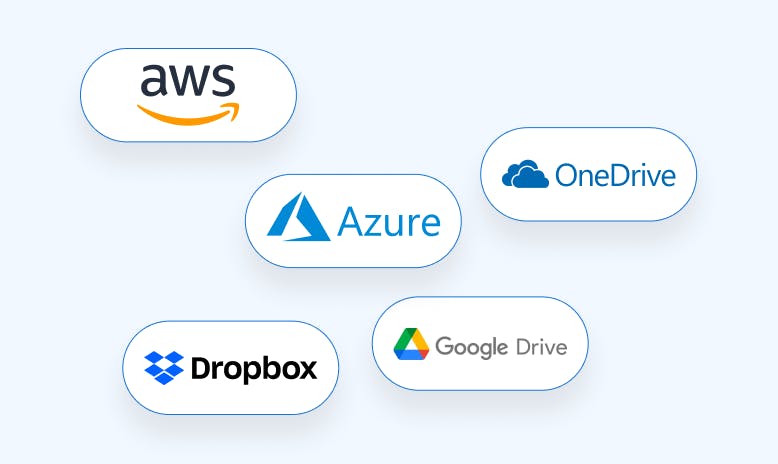
Client files can also be shared via cloud platforms such as AWS, Microsoft Azure, Google Drive, Dropbox and OneDrive. Storing files in the cloud enables access from any internet-connected device while remaining secure.
However, these services have limitations. Sharing individual files manually is tedious for larger teams. Human errors, including misdirected sharing or forgetting to share, are risky. While helpful for some tasks, standalone clouds are insufficient for highly sensitive data.
“We relied on Google Docs, SharePoint — but they were all using local servers. The risk attached to that was immense,” said Are Berg Hjelle, one of the partners at Athene Group.
Now the firm uses TaxDome’s client portal for accountants to share files securely.
3. Secure client portal
Client portals give you the best of both worlds — the benefits of the cloud and password protection. They are secure online platforms that act as centralized hubs for sharing files and communicating with clients, providing robust security features combined with efficient workflows.
With TaxDome, for example, you can scan, upload, approve and e-sign documents within a single hub at any time and on any device. Clients only need one password for all interactions, and with the option to use Face ID and smartphone access, they don’t even have to worry about remembering it.
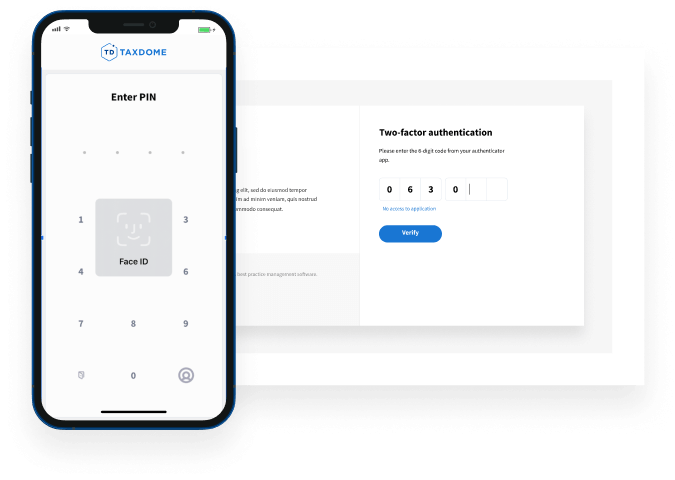
Unlike basic cloud sharing, TaxDome was tailored specifically for accounting industry needs. It enables you to lock documents to invoices, bill via the portal and even provide your team members with granular access rights. TaxDome can also integrate with your existing tools and workflows.
By blending robust encryption with streamlined workflows, TaxDome’s secure client portal balances accountants’ need for security and efficient collaboration.
Sometimes accountants need to share client files externally with third parties: legal counsel, financial advisors, auditors or clients without portal access. To avoid jeopardizing security, accountants can take the following steps to securely share files:
- Limit external sharing only to essential cases to minimize exposure
- Create unique, complex share links for each file rather than attaching files directly
- Set expiration dates and download limits on links to control third-party access
- Enable multi-factor authentication for users that create shared links
- Monitor link activity logs to detect improper sharing or access
With the right precautions, third-party file sharing can be done securely. The TaxDome client portal provides these protections.
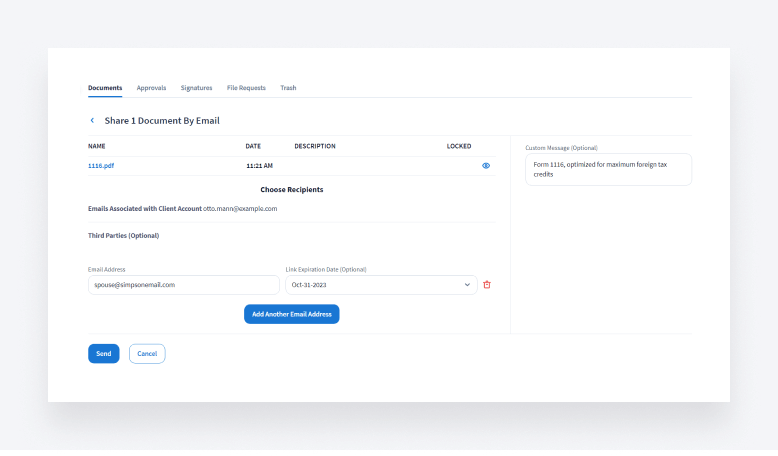
Simply add the email address of the person you want to share a specific file with, an expiration date and, if desired, a custom message. Once links are disabled, the files can no longer be accessed externally.
Such links are encrypted end-to-end, so you can share files while still protecting sensitive client data.
Best practices for secure file sharing
While specific tools are important, broader best practices also significantly improve file safety. Below are some general guidelines accounting professionals may want to follow, regardless of the chosen sharing method:
- Encrypt files, links and transmissions to scramble data and prevent unauthorized access
- Implement strong access controls such as multi-factor authentication and complex auto-generated passwords and limit share creation permissions
- Regularly update software, including file-sharing platforms, operating systems and antivirus programs, to patch security holes
- Carefully control external sharing with non-portal members
- Transmit files over secure connections — HTTPS or FTPS
- Educate team members on security protocols through training
- Back up critical accounting data regularly in case of ransomware or human errors
- Monitor activity logs and user behavior for signs of improper access or sharing
- Work with IT security specialists to identify and address vulnerabilities
Conclusion
Client documents often contain highly sensitive data, making secure file sharing a top priority for accountants. Methods such as encrypted cloud platforms, password protection and purpose-built client portals can help safeguard against data breaches, reputational damage, lawsuits and loss of client trust.
However, the specific sharing methods used are only one piece of the security puzzle. We advise accounting professionals to evaluate current sharing workflows and align with best practices to protect both your firm’s and your clients’ interests.

Thank you! The eBook has been sent to your email. Enjoy your copy.
There was an error processing your request. Please try again later.
Looking to boost your firm's profitability and efficiency?
Download our eBook to get the answers

